In a recent piece of great investigative journalism this video report revealed what happens to the plastic you put in certain recycling bins. It got us thinking about some of the sustainability or planet friendly ideas that you want to be true, or look believable, but when you scratch below the surface, things are not even close to what you are being led to believe.
Sifting through the rubbish
Often referred to as greenwashing, many businesses are being called out for misleading customers. But equally there are superb platforms like good on you and ethical consumer that review brands on your behalf and rate them for planet, people and animal standards, so you can make an informed choice.
Here‘s a few thoughts from our team, on how to see beyond some of the 'eco-conscious' claims of fast fashion retailers and consumer brands.
O1_What is compostable?
What do you imagine compostable actually 'means' when you see it on a coffee cup or packaging? Most people we've spoken to imagine it means that the product or packaging labelled in this way can be put in the ground where it will do no harm just like a banana skin. The common assumption is that if you put it in the recycling bin it will somehow make its way to a compost bin.
However, products made from organic material can actually contaminate a recycling waste stream. They are often made of a laminate of paper or card with a plant-based plastic but the two materials are very hard to separate (ever tried peeling the window off a sandwich packet?) and the plastic film can clog up recycling machines. But, they can be gold-dust for businesses like First Mile if you have one of their special compostables packaging recycling sacks. Kept separate in this way many recyclers can recover the materials.
But even then the materials do not end up in a natural composting bin like you might imagine. The plant-based plastics are only suitable for industrial composting, which is a process carried out at specialist facilities. This article does a good job of illustrating what compostable is and isn't. And here's the First Mile's take on composting of compostable coffee cups. For the consumer, this makes it complex and challenging to know what to do when standing on the high street with that empty coffee cup in your hands.
O2_Not all glass is equal
As with all recycling, this is a constantly shifting landscape. Glass is widely recycled but the benefits of doing this vary widely depending on who you speak to. 1kg of manufactured glass emits about 8.4kg of CO2. But we found figures online for the CO2 emissions of recycled glass that varied from 0.3kg to 8kg! As with all things in sustainability, recycling glass is not completely clear:
- the reduction in CO2 emissions gained when using recycled glass can be completely negated if the recycled glass needs to be transported long distances
- pyrex glass, which many households have in the form of a measuring jug, is also known as borosilicate glass. It is used in ovens because it can resist high temperatures, but this makes it difficult to recycle and can't be accepted along with other glass like bottles, for recycling
- window glass can not be recycled at the kerbside because it's been treated to prevent shattering meaning it melts at a higher temperature
- ceramics might seem similar to glass but shouldn't go in the glass recycling bin
O3_When a cheesburger ruins a bike ride
Cycling is considered as an ideal form of transport when thinking about carbon footprints; but it turns out that the full impact of a bike ride on the planet is dependent on how you fuel your body. According to Mike Berners-Lee if you eat two cheeseburgers to power a long ride, it would be the equivalent to driving the same distance in an efficient car.
There's no doubt that cycling is a carbon-friendly form of transport and there are many other benefits over driving including to our health and air quality. But this example illustrates how we tend to just look at a bike and compare it to a car whilst forgetting that the cyclist had to get their energy from somewhere.
If you're looking for a good read, with more examples like this, look at How bad are bananas? If you enjoy Freakonomics you’ll love this.
04_Coffee pods and tea bags
Have you ever thought about the fact that it's taken years to get plastics out of tea bags, with companies working hard to offer plastic free tea bags, only for coffee producers to start packaging coffee in plastic? The biggest environmental impact from our obsession with coffee undoubtedly comes from its production but what's the "best" way to get that daily hit of caffeine?
According to researchers at the University of Bath, coffee pod machines win out over most other forms of brewing coffee because they "flash heat" just the water needed for the cup being made. They also found that aluminium pods win out over plastic ones provided they go through a specific waste collection stream.
There are lots of organisations such as Terracycle, who help with a pod take-back scheme, allowing brands to mark up their packaging as recyclable; but it's not ideal for every household with a coffee pod machine. We came across this interesting article around the challenges with Terracycle and how it can lead to large companies continuing to make plastic to enable their current business model instead of rethinking the entire proposition.
O5_A fashion faux pas
An industry notorious for it's contribution to global carbon emissions and water pollution is fashion, with the broad use of textiles made from polyester, nylon, acrylic and polyamide plastics making up 64% of all new fabrics. There are multiple issues that result, the most high profile being the microfibre pollution caused when clothing is washed.
Microfibres are microplastics shorter than 5mm in length and small enough to pass through your washing machine and enter our waterways.
Whilst many large fast-fashion retailers have genuine aspirations to reduce the damage their industry is causing, with equal measure there seems to be a significant lack of transparency in their marketing. Using eco-friendly materials like organic cotton, but combining with a range of thermoplastics in some products (like this pouch) makes it notoriously hard to recycle and therefore not a product to promote as environmentally friendly.
Consumers scanning websites see words like sustainable, conscious, circular, environmentally friendly, reducing waste and thoughtful, alongside 100% and organic, but if you slow down and read the absolute commitments, the majority of claims are misleading shoppers.
Bamboo for example, is a sustainable plant in terms of speed of growth and water usage but when it comes to the final fabric, it goes through a process using chemicals to convert it from the plant into fibres for clothing which is harmful to workers' health and the impact of the final product will depend entirely on the manufacturer involved at this stage.
What's next?
It is estimated that over 80% of all product-related environmental impacts are determined during the design phase of a product. Reduce, reuse and recycle is certainly an important strategy for ensuring we slow down the consumption of the earth's finite resources. However, it is simply a 'less bad' solution to the traditional take, make and waste approach.
The Circular Economy and Circular Product Design are familiar concepts to many industrial designers, thanks to organisations, such as The Ellen MacArthur Foundation, that has raised public awareness of the need for this approach, but there's still much work to be done to raise awareness amongst consumers.
A good everyday example of a consumer product that has been designed with the end in mind, is SMOL's dissolvable tables for cleaning sprays, which means there's no shipping of heavy liquids.
Cradle to Cradle® reframes the entire process of making products into one that is 100% good or regenerative. Herman Miller's Aeron chair is a fine example of a product that stands the test of time in many offices around the world, that was designed with sustainability in mind. It aims to mimic nature where there is no waste, only a continuous, never-ending cycle of growth, decay and regeneration.
At The Imagination Factory we use a practical framework called Resource-Conscious Design which is based on the core concepts of circular design which companies like Kenwood (De'Longhi) have found really useful. Get in touch if you'd like to know more.




